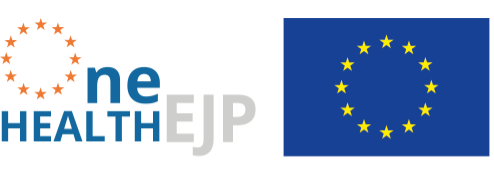Anker Engelunds Vej 1, Stampen, Region Hovedstaden, Denmark
Madrid, Comunidad de Madrid, Spain

The Project #ECO-HEN
| Start: | February 2019 |
| Duration: | 3 years |
| Domain: | Antimicrobial Resistance |
| Members: | UMC- Spain, DTU- Denmark |
| Contact: | Prof Miguel A. Moreno (UCM) |
ECO-HEN: Dynamics of E.coli in laying hens
Antimicrobial resistance (AMR) is a top health priority under the One Health perspective since spread of AMR bacteria does not recognize borders across humans, animals and the environment.
Knowledge on transmission dynamics of AMR bacteria is a key factor for better understanding the role of animals and food of animal origin as a source of AMR bacteria in humans. Obviously, zoonotic AMR bacteria have been largely studied, especially salmonellas, but there are commensal AMR bacteria that can better spread AMR genes, being Escherichia coli one of the best carriers.
E.coli contribute to AMR spread by clonal strains able to survive on the food chain and by its ability for horizontal transfer of genetic platforms (like plasmids and integrons) containing AMR genes across bacteria. The presence of AMR E. coli in animal intestinal microbiota is well documented, especially in those animals which are under intensive production systems like pigs and broilers. Sows are, for instance, the main source of AMR E. coli populations in piglets, but their fate during the lifespan of pigs depends on different factors, especially the selective pressure imposed by antimicrobial use (AMU).
On commercial table eggs production, the dynamics of AMR E. coli populations have been scarcely studied. It is plausible that one‐day chicks represent a relevant source of AMR bacteria. However, since AMU use is very limited during the egg‐production stage due to the zero days of withdrawal period, the main selective pressure favouring persistence of AMR populations is almost absent. Thus, if there were no additional sources of AMR E. coli, those deriving from one‐day chicks should be reduced in the intestinal microbiota of hens, and thereby faecal shedding and the consequent risk of spread to the food chain (both directly through eggs and indirectly through manure used as organic fertilizer in crops) should be limited.
The main goal of ECO-HEN PhD project was to fill the gap on the transmission dynamics of AMR E. coli in commercial laying hen production and to determine to what extent this animal production poses a public health risks via food and/or environment contamination.
These main hypotheses were tested: a) one‐day chicks are an outstanding source of AMR E. coli in commercial eggs production, and b) limited or no use of antimicrobials reduces the possibilities of AMR E. coli transmission to the food chain and to the environment.
ECO-HEN used the following methods:
- Monitoring of four batches of commercial laying hens farms from one day‐old chicks to laying hens (rearing period and production cycle), including both animals and table eggs.
- Detection of E. coli populations, using antibiotic‐supplemented (cefotaxime and ciprofloxacin) and non‐supplemented culture media.
- E. coli identification and characterisation by PCR and MALDI‐TOF (10 isolates per culture media and sampling).
- E. coli phenotypic characterisation of AMR by broth microdilution.
- E. coli genotypic characterisation using Whole Genome Sequencing.
The obtained knowledge has helped to reveal to what extent the table egg production system represents a risk for spread of AMR to humans and the environment. Genomic data is now shared across electronic platforms and is available for a larger community of clinical and environment microbiologists for comparative analyses. Furthermore, the results have revealed what the effect is of reduced antimicrobial use in the production animals on the AMR bacteria initially present in the one‐day chicks.
Congratulations to Irene on being awarded her Doctorate degree in Autumn 2022!
Project Assets
“Putative APEC isolates from healthy animals and eggs in a laying-hen commercial farm” Poster presentation at One Health EJP ASM 2022, Orvieto, Italy. 11-13th April 2022. Abstract available here.
“blaCMY-2 gene dynamics in a commercial egg production farm” Oral presentation at XXVII Microbiology Spanish Society National Congress of Microbiology. 28th June to 2nd July 2021.
“Dynamics of extended spectrum β-lactamase resistance gene blaSHV−12 in a laying hen commercial farm” Poster presentation at One Health EJP ASM 2021, hybrid event. 9-11th June 2021. Abstract available here.
“First report of trimethoprim resistance gene dfrA36 on an IncF-plasmid in Escherichia coli isolated from day-old chicks” Poster presentation at One Health EJP ASM 2020, online. 27-29th May 2020. Abstract available here.

Irene Aldea Ramos


